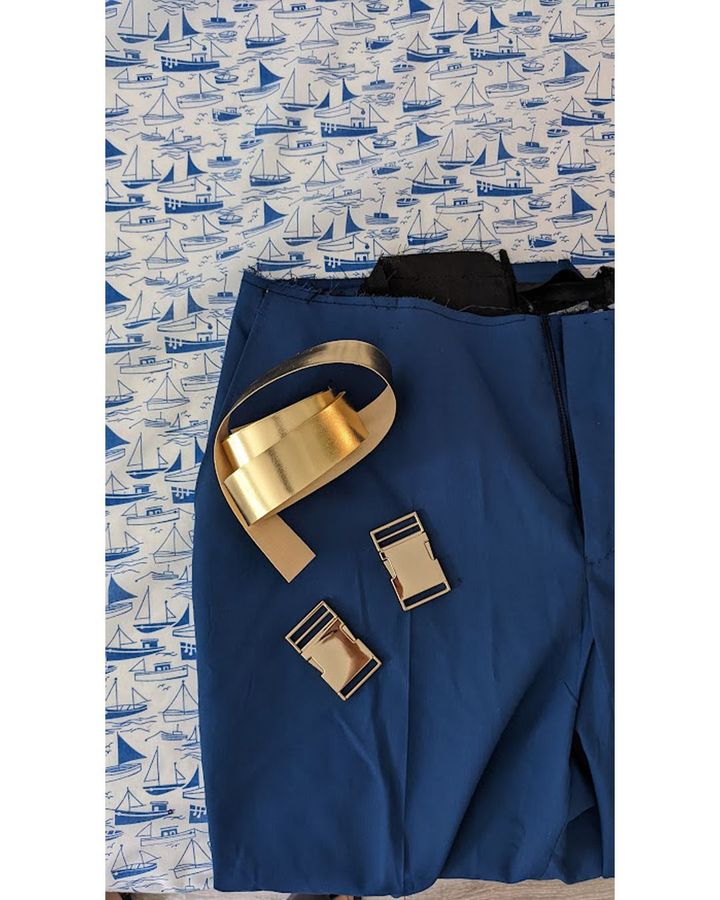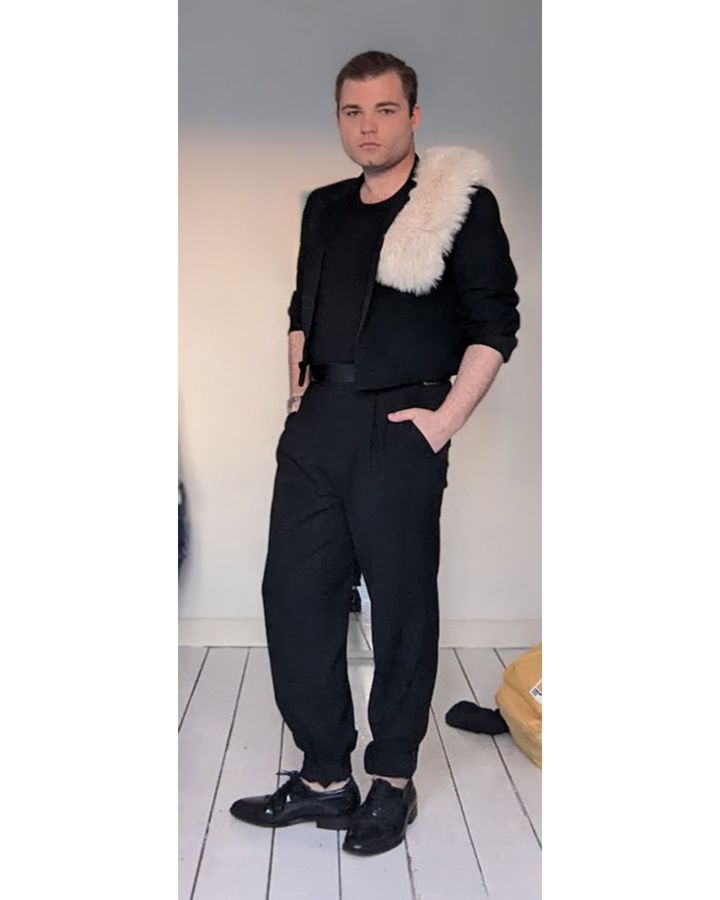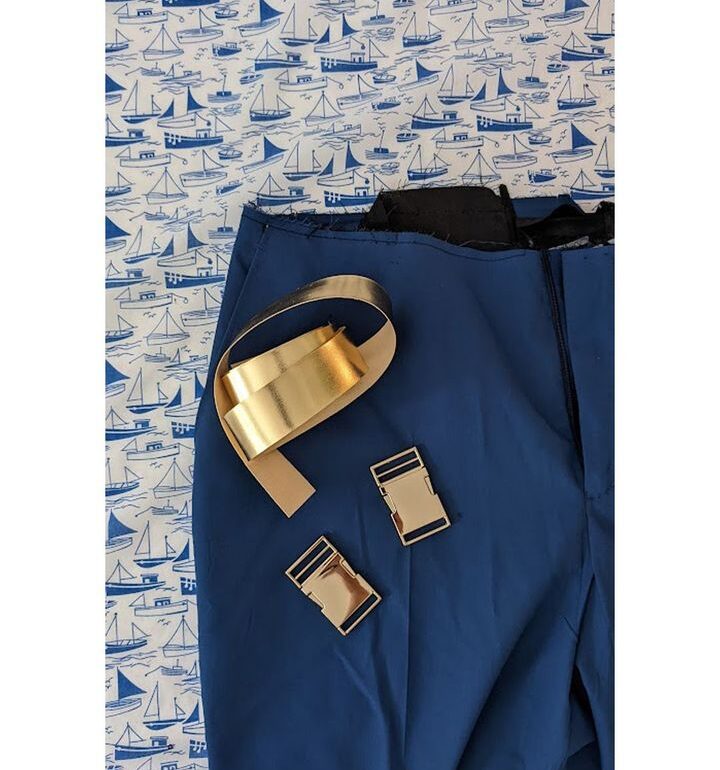For the past two years, Stephen Lehane has been running “stitch ‘n’ bitch” sessions from his flat in London. On a free Saturday, he’ll announce the session to friends and family, who descend with items of clothing they’d like repaired or upcycled into something “new”. Lehane has two conditions: people must stay while their clothes are being altered, and payment is a bottle of wine.
More like this:
– An ancient Japanese method of upcycling
– Why ‘wash, wear, repeat’ makes sense
– How to dye clothes at home naturally
“I’ll sit at my sewing machine all day while friends drop by with ripped leggings, dresses that are too tight or jeans that don’t fit their style anymore,” he explains. “The flat really comes alive, and there’s such a lovely feeling of community that a fast-fashion retailer could never replicate. I make an effort to talk people through what I’m doing, so I can share some practical skills. I do warn that, as the day goes on and the wine flows, my ‘creativity’ soars. Don’t arrive at 10pm and trust me to immaculately hem your wedding dress.”

Lehane, who works for an investment bank, was given a sewing machine for his 21st birthday as a creative outlet. But even for those who wouldn’t dream of using one, Lehane recommends learning some simple repair skills, including basic darning, hemming web (a sew-free way to bond fabrics) and at-home, washing-machine dye packs made from environmentally-friendly dyes.
For as long as he can remember, Lehane has favoured clothes with a story: the thrill of finding an oversized tweed coat with shoulder pads in his granddad’s wardrobe, for instance, always appealed far more than a spending spree in Primark. It’s a trait that comes with wider environmental benefits, too. Repair allows favourite pieces to be given a longer lifespan, while upcycling satisfies the hunger for new clothing by altering existing ones.
In its current form, the fashion industry largely operates using a linear model. Every year, more than 100 billion items of new clothing are made, yet 92 million tonnes of annual textiles waste is sent to landfill, in part because only 1% of textiles is currently recycled back into clothing. With the fashion industry contributing up to 10% of global carbon emissions, a report by the Ellen MacArthur Foundation calls for a transition to a circular economy, with new models of accessing clothes, including repair, rental and second-hand shopping.




London-based Stephen Lehane upcycles and alters friends’ clothes for them in his spare time (Credit: Stephen Lehane)
Rebecca Early, professor of circular design futures at University College London and co-founder of World Circular Textiles Day, says this is an area ripe for entrepreneurs. “The adverts from brands that came through my social media feeds were one of the biggest challenges [to stop buying new clothes]. I unsubscribed from them,” she tells BBC Culture. “Busy women who like clothes – and who have changing needs and body sizes – would benefit from being able to easily access a range of services to help them clothe themselves and their families. We need a click-and-collect range of options to complement our carefully curated and well-cared for slow wardrobes.”
Repair and restore
Jennie Soulsby, from Hertfordshire, UK, began shopping her own wardrobe during lockdown in 2020, and now regularly uses repair and restoration services, which have grown in numbers and popularity over recent years. The Seam, which connects skilled menders, cleaners and restorers with the public online, has seen sales rise by almost 300% year-on-year in 2022, while Sojo secured £1.8 m ($2.2m) in funding for its app.
Wardrobe tips
- Get to know what really suits you, from colours to silhouettes – this helps when choosing second-hand clothes.
- When choosing a repair and alteration service online, look out for good reviews. Or find and support a local repair service near you.
- Learn some basic repair skills online or at a local group or class: darning, web hemming and at-home clothes dyeing could give favourite pieces a longer lifespan.
“This led to a process of re-evaluating my clothes – selling some things on, repairing others and only buying five new items a year. Everything else is second-hand,” Souslby explains. In the last year alone, she has repaired three items (a pair of jeans, boots and a skirt) and altered a pair of trousers and jeans to change the silhouettes.
For some, the comparative price of repairs and alterations to buying new from fast fashion brands can be too high: it costs £20 ($25) to repair a tear and £30 ($37) to create a new neckline on a shirt at The Seam. But for Soulsby, it comes down to value and mindset.
“If you love something, and you know it is so old you wouldn’t be able to source it again then it is absolutely worth keeping,” she says. “It’s hard to find things you really love and want to keep wearing – with all of the good times and memories that attach themselves to those items.”
Soulsby’s reevaluation of her wardrobe included tackling the hunger for new clothes, driven by brands pushing trends and new pieces, sometimes on a daily basis. She says it’s a model that even some second-hand sellers have adopted. “Lots of sellers echo the ‘drop’ model so they keep up that feeling that you have to have it. I think it can lead to rash impulses and poor buys.”
Lisa Wenske, a copywriter from Berlin and loyal second-hand shopper, agrees. She made a New Year’s resolution in 2017 to only buy second-hand clothing for a year – both out of necessity (a shoestring budget) and a growing concern for the effects of fast fashion on garment workers and the planet. The resolution became a habit; Wenske rarely buys new clothes.




Lisa Wenske (left) in a Rixo dress purchased second-hand from Vestiaire Collective, with her sister in a vintage dress (Credit: Lisa Wenske)
“Making this change meant I really had to form new habits,” she explains. “I learned what fabrics to look out for, and which to avoid – 70s dresses look great for example, but are often made from stiff polyester – and what shapes work for me. I still find amazingly budget-friendly items in charity shops and flea markets, but second-hand shopping isn’t always cheap, and you have to invest time. It’s not as straightforward as walking into Zara, but you appreciate the treasures you find more.”
For Wenske, she budgets the same way as she would if buying new – around £50 ($61) to £80 ($98) for a dress. She says this level gives shoppers access to more curated vintage shops, be it online or on the high street, with better service and maybe even returns, saving time in the process.
With many online resale sites not offering returns, Wenske recommends visiting physical shops to learn your size in specific brands. “I buy a lot of second-hand items from brands that are current, like Cos, Reformation, Ganni or Rixo. With all of these I popped into their shops to understand what size fits right – and then bought the dress I wanted on Vestiaire Collective or similar platforms,” she says.
Renting clothes is another way to help satisfy the craving for new items, especially for one-off special occasions. A dress by The Vampire’s Wife, which retails for £1,995 ($2,443), is available to rent for around £40 ($49) a day on My Wardrobe HQ. The company also offers a subscription service, where customers pay a monthly fee – starting from £59 ($72) – to keep pieces in their wardrobe in monthly rotation. “The subscription model appeals to people who are looking at clothes in a very different way, with a sustainability head on,” says co-founder Sacha Newall.




Wenske lives in Berlin – she frequently shops for clothes in the city at flea markets and vintage shops (Credit: Lisa Wenske)
Few people buy new clothes out of necessity; fashion is far more often a form of self-expression. Yet the current model, propelled by trends and endless new drops, seems at odds with this sentiment, which perhaps explains why 30% of clothes in our wardrobes have not been worn for at least a year.
“If you buy fast fashion, you mostly buy into trends, and they’re chosen by someone else. With second-hand, you really have to think about what you like and how you want to express yourself with clothes,” Wenske says. “I only developed something resembling a personal style once I started buying second-hand. For me, it was a way of getting to know myself better – and definitely something I’d recommend.”
Three Things to Help Heal the Planet by Ana Santi is published by Welbeck Balance
If you liked this story, sign up for The Essential List newsletter – a handpicked selection of features, videos and can’t-miss news delivered to your inbox every Friday.
Sign up to the Future Earth newsletter to get essential climate news and hopeful developments in your inbox every Tuesday from Carl Nasman. This email is currently available to non-UK readers. In the UK? Sign up for newsletters here.
This post was originally published on this site be sure to check out more of their content.









